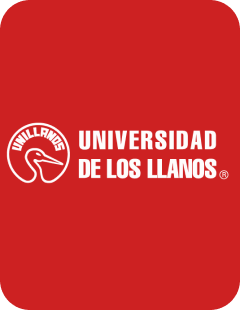Examinando por Autor "ARIAS, C.J.A."
Mostrando 1 - 4 de 4
Resultados por página
Opciones de ordenación
Publicación Sólo datos Indicadores del ciclo reproductivo del yamú Brycon amazonicus, en cautiverio(Universidad de los Llanos, 2006-09-01) ARIAS, C.J.A.; ZANIBONI-FILHO, E.; AYA, B.ETitulo en ingles: Cycle reproductive indicators for yamú Brycon amazonicus, in captivity RESUMEN: Los índices gonadosomático, hepatosomático y de grasa viscerosomática, como indicadores del ciclo de desarrollo gonadal del yamú Brycon amazonicus, fueron relacionados durante dos ciclos reproductivos consecutivos. Los valores mensuales de factores de condición, diámetro ovocitario y pluviosidad igualmente fueron determinados y comparados con el índice gonadosomático para determinar la asociación y variación durante el periodo de estudio.La proporción hembra:macho fue de 1.85:1. Se comprobó la relación directa entre el diámetro promedio de los ovocitos y el índice gonadosomático y de éste con los diferentes factores de condición al igual que con la pluviosidad para la época de vitelogénesis y desove de la especie. Se registraron altos índices de grasa viscerosomática durante todo el estudio, disminuyendo significativamente durante los meses inmediatamente anteriores al desove y variando inversamente al índice gonadosomático. El factor de condición relativo indicó el corto periodo reproductivo. La época de reproducción en cautiverio, como en la naturaleza, se presentó al inicio de las lluvias. La mejor relación se obtuvo entre la fecundidad y el peso de los ovarios.Palabras clave: Brycon amazonicus, índices gonadosomático, hepatosomático y de grasa viscerosomática, factores de condición, diámetro ovocitarioABSTRACT: Gonadosomatic, hepatosomatic and viscerosomatic fat indexes were determined during two consecutive reproductive cycles as indicators of the gonadal development of yamú Brycon amazonicus. Monthly values of condition factor, oocyte diameter and pluviosity were collected and related with the gonadosomatic index in order to determine variations and ratios between them during study period. The proportion female:male was of 1.85:1. A direct relation between mean oocyte diameter and gonadosomatic index was demonstrated, and also between the different condition factors and pluviosity, especially for the vitellogenesis and maturity periods. High viscerosomatic fat index was registered throughout the study, but it decreased significantly during the months immediately before spawning, varying inversely with the gonadosomatic index. The relative condition factor indicated a short reproductive period. Reproduction period in captivity as well as in nature remained at the beginning of the rainy season. The best relation was obtained between fecundity and weight of ovaries.Keywords: Brycon amazonicus, gonadosomatic index, hepatosomatic index, viscerosomatic fat index, condition factor, oocyte diameterPublicación Sólo datos Indicadores del ciclo reproductivo del yamú Brycon amazonicus, en cautiverio(Universidad de los Llanos, 2006-09-01) ARIAS, C.J.A.; ZANIBONI-FILHO, E.; AYA, B.ETitulo en ingles: Cycle reproductive indicators for yamú Brycon amazonicus, in captivity RESUMEN: Los índices gonadosomático, hepatosomático y de grasa viscerosomática, como indicadores del ciclo de desarrollo gonadal del yamú Brycon amazonicus, fueron relacionados durante dos ciclos reproductivos consecutivos. Los valores mensuales de factores de condición, diámetro ovocitario y pluviosidad igualmente fueron determinados y comparados con el índice gonadosomático para determinar la asociación y variación durante el periodo de estudio.La proporción hembra:macho fue de 1.85:1. Se comprobó la relación directa entre el diámetro promedio de los ovocitos y el índice gonadosomático y de éste con los diferentes factores de condición al igual que con la pluviosidad para la época de vitelogénesis y desove de la especie. Se registraron altos índices de grasa viscerosomática durante todo el estudio, disminuyendo significativamente durante los meses inmediatamente anteriores al desove y variando inversamente al índice gonadosomático. El factor de condición relativo indicó el corto periodo reproductivo. La época de reproducción en cautiverio, como en la naturaleza, se presentó al inicio de las lluvias. La mejor relación se obtuvo entre la fecundidad y el peso de los ovarios.Palabras clave: Brycon amazonicus, índices gonadosomático, hepatosomático y de grasa viscerosomática, factores de condición, diámetro ovocitarioABSTRACT: Gonadosomatic, hepatosomatic and viscerosomatic fat indexes were determined during two consecutive reproductive cycles as indicators of the gonadal development of yamú Brycon amazonicus. Monthly values of condition factor, oocyte diameter and pluviosity were collected and related with the gonadosomatic index in order to determine variations and ratios between them during study period. The proportion female:male was of 1.85:1. A direct relation between mean oocyte diameter and gonadosomatic index was demonstrated, and also between the different condition factors and pluviosity, especially for the vitellogenesis and maturity periods. High viscerosomatic fat index was registered throughout the study, but it decreased significantly during the months immediately before spawning, varying inversely with the gonadosomatic index. The relative condition factor indicated a short reproductive period. Reproduction period in captivity as well as in nature remained at the beginning of the rainy season. The best relation was obtained between fecundity and weight of ovaries.Keywords: Brycon amazonicus, gonadosomatic index, hepatosomatic index, viscerosomatic fat index, condition factor, oocyte diameterPublicación Sólo datos Influencia de la temperatura en la sobrevivencia de larvas de Rhamdia sebae c.f. (Siluriformes heptapteridae)(Universidad de los Llanos, 2007-01-01) COLLAZOS LASSO, L.F.; ARIAS, C.J.A.Titulo en ingles: Influence of the temperature in the survival of larvae of Rhamdia sebae c.f. (Siluriforme heptapteridae).RESUMEN: Para determinar la influencia de la temperatura en la sobrevivencia de larvas de Rhamdia sebae c.f., durante la primera hora pos-siembra para alevinaje en estanques de tierra, ejemplares de 120 horas de nacidos, previamente alimentados desde las 72 horas pos-eclosión, cada 6 horas, con naúplios de Artemia sp. Fueron sometidas a diferentes tratamientos de temperatura (5.5 a 39.0ºC, con intervalos de 0.5ºC), efectuándose registros de sobrevivencia cada cinco minutos durante una hora. La sobrevivencia de las larvas fue mayor de 80% entre 14-33 ºC sin diferencias estadísticas significativas (p<0,05), constituyéndose éste intervalo en el rango de confort. Los rangos de estrés inferior y superior en los que se obtuvo un porcentaje de sobrevivencia entre 30 y 80% fueron de 10.5-14 ºC y 33-37ºC respectivamente. Los rangos críticos inferior y superior, con un porcentaje de sobrevivencia inferior al 30%, se establecieron en 6-10.5 ºC y 37 a 38.5ºC respectivamente. Las temperaturas letales fueron 5.5 y 39 ºC. El tiempo de repuesta de ajuste a la temperatura “aclimatación”, fue estimado en 10 minutos (95% de confiabilidad). Palabras clave: Rhamdia sebae, larvicultura-alevinaje, temperatura, rangos de confort, estrés, critico, aclimatación.ABSTRACT: To determine the influence of the temperature in the survival of larvae of Rhamdia sebae c.f., during the first hour after the seeds for the alevinaje, larvae of 120 hours of born, previously fed from the 72 hours post- beginning every six hours with nauplii of saline Artemia, they were subjected to different treatments of temperature (5.5 to 39 ºC, with interval of 0.5 ºC), each treatment with six replies and registrations every five minutes. The survival of the larvae was bigger than 80% among 13 to 33 ºC during the whole experienced time and in all you reply them carried out, without significant statistical differences between treatments and times to p <0,05, being constituted this interval in the range of comfort. The ranges of inferior stress and superior with percentage of survival between 30 and 80%; they went from 10.5 at 13.5 ºC and 33.5 at 37ºC respectively. The ranges of it breaks, with a percentage of inferior survival to 30%, they went from 6 to 10 ºC for the range of it breaks inferior and 37.5 to 38.5 ºC for the range of it breaks superior. The lethal temperatures were 5.5 and 39 ºC. The time of having restored from adjustment to the temperature (“acclimatization”), it was estimated in 10 minutes (95% of dependability). Key words: Rhamdia sebae, temperature, larvario development, comfort, break, sobreexperience.Publicación Sólo datos Influencia de la temperatura en la sobrevivencia de larvas de Rhamdia sebae c.f. (Siluriformes heptapteridae)(Universidad de los Llanos, 2007-01-01) COLLAZOS LASSO, L.F.; ARIAS, C.J.A.Titulo en ingles: Influence of the temperature in the survival of larvae of Rhamdia sebae c.f. (Siluriforme heptapteridae).RESUMEN: Para determinar la influencia de la temperatura en la sobrevivencia de larvas de Rhamdia sebae c.f., durante la primera hora pos-siembra para alevinaje en estanques de tierra, ejemplares de 120 horas de nacidos, previamente alimentados desde las 72 horas pos-eclosión, cada 6 horas, con naúplios de Artemia sp. Fueron sometidas a diferentes tratamientos de temperatura (5.5 a 39.0ºC, con intervalos de 0.5ºC), efectuándose registros de sobrevivencia cada cinco minutos durante una hora. La sobrevivencia de las larvas fue mayor de 80% entre 14-33 ºC sin diferencias estadísticas significativas (p<0,05), constituyéndose éste intervalo en el rango de confort. Los rangos de estrés inferior y superior en los que se obtuvo un porcentaje de sobrevivencia entre 30 y 80% fueron de 10.5-14 ºC y 33-37ºC respectivamente. Los rangos críticos inferior y superior, con un porcentaje de sobrevivencia inferior al 30%, se establecieron en 6-10.5 ºC y 37 a 38.5ºC respectivamente. Las temperaturas letales fueron 5.5 y 39 ºC. El tiempo de repuesta de ajuste a la temperatura “aclimatación”, fue estimado en 10 minutos (95% de confiabilidad). Palabras clave: Rhamdia sebae, larvicultura-alevinaje, temperatura, rangos de confort, estrés, critico, aclimatación.ABSTRACT: To determine the influence of the temperature in the survival of larvae of Rhamdia sebae c.f., during the first hour after the seeds for the alevinaje, larvae of 120 hours of born, previously fed from the 72 hours post- beginning every six hours with nauplii of saline Artemia, they were subjected to different treatments of temperature (5.5 to 39 ºC, with interval of 0.5 ºC), each treatment with six replies and registrations every five minutes. The survival of the larvae was bigger than 80% among 13 to 33 ºC during the whole experienced time and in all you reply them carried out, without significant statistical differences between treatments and times to p <0,05, being constituted this interval in the range of comfort. The ranges of inferior stress and superior with percentage of survival between 30 and 80%; they went from 10.5 at 13.5 ºC and 33.5 at 37ºC respectively. The ranges of it breaks, with a percentage of inferior survival to 30%, they went from 6 to 10 ºC for the range of it breaks inferior and 37.5 to 38.5 ºC for the range of it breaks superior. The lethal temperatures were 5.5 and 39 ºC. The time of having restored from adjustment to the temperature (“acclimatization”), it was estimated in 10 minutes (95% of dependability). Key words: Rhamdia sebae, temperature, larvario development, comfort, break, sobreexperience.


